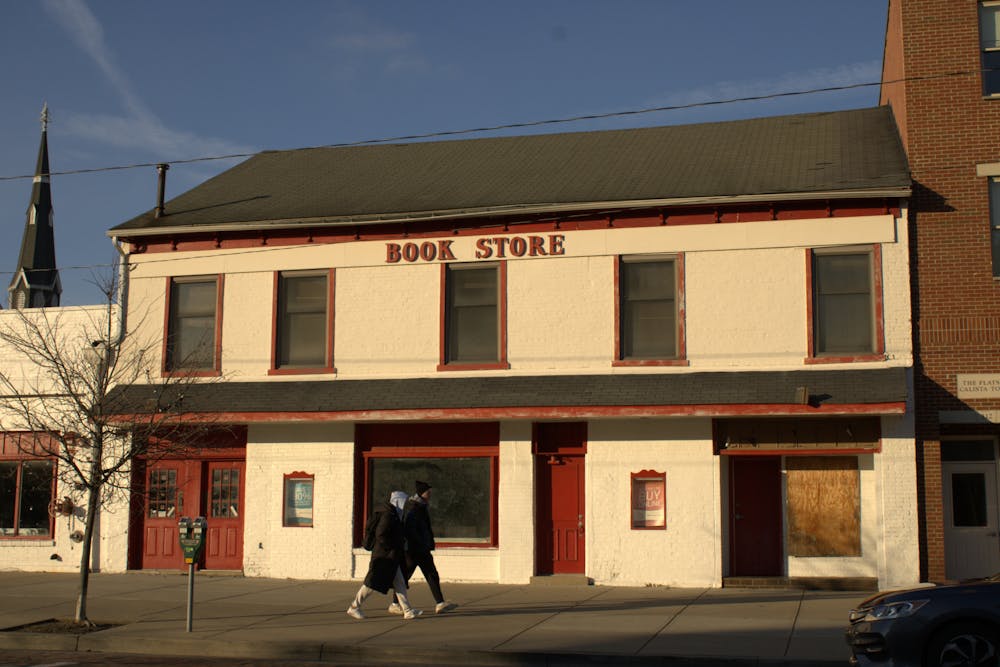Madison Peckman, a junior political science major, works at Brick Street Bar, which sits across from the large, empty bookstore at the intersection of East High Street and North Poplar Street.
“It's kind of an eyesore for people,” Peckman said. “Every time I work there outside, it's like they are not keeping up with [it]. Everyone is looking at it, even if it’s not open.”
The property at 108 E. High St. has remained empty since 2014. Before closing, Follet’s Miami Co-op bookstore had occupied the space since the ’70s.
The property s currently managed by Varick Reality, a firm based in New York, who also owns the property of 45 E. High St. on the opposite corner of the intersection, which is also undergoing renovation.
During the Historic & Architectural Preservation meeting on Nov. 8, an outside company, Naylor Wellman LLC, hired by the building owner’s project architect Emily Lubbers, presented a proposal to reclassify the building’s front from “historic” to “historic non-contributing.”
The previous classification was made in February 2018 during the Uptown Historic District Inventory, which determined the facade, or front, of the 108 property to be “historic.” According to Oxford’s code, it had special historical significance as one of the oldest buildings in the commercial district with what appeared to be a slightly altered appearance of the original storefront.
Sam Perry, the director of community development for Oxford, explained that this earlier classification gave the front “a higher level of preservation requirement.”
The rest of the building was classified as non-contributing, meaning it had no historical significance. However, the original classification of the building’s front meant that the architects would have to try to either preserve or reproduce the facade when renovating.
“Preservation is good for communities, but it has to be balanced with economic development and community needs,” Perry said.
This change in classification means that although the structure is more than 50 years old, the historically significant character no longer remains.
Seth Cropenbaker, an economic development specialist with the City of Oxford, attended the meeting and spoke with the architect about some possible future plans for the building.
Cropenbaker said the architect indicated that this piece of property and its redevelopment is a higher priority for the owner and can expect to see a new development ready for occupancy in fall 2025.
Enjoy what you're reading?
Signup for our newsletter
Cropenbaker explained that this would allow them to get a greater return on investment.
Both Perry and Cropenbaker expressed their support for the reclassification in order for progress to be made at the site, which is central to Uptown.
“I'm really glad to see that this owner and the architect took it seriously, which shows a lot of respect for the city council,” Perry said.
After this reclassification, Cropenbaker predicts that some form of first-floor commercial space with residential apartments above will be built.
“Whether that is students living there, whether that's some type of commercial development on that first floor, just added activity and vibrancy to the space brings more people Uptown,” Cropenbaker said.
Although the plans for the space have not yet been presented to the public, Cropenbaker feels optimistic about whatever progress occurs.
“Maybe it gives folks a greater sense of security,” Cropenbaker said. “You're not walking past an empty building. Now you're walking past a place with lights and vibrancy.”




